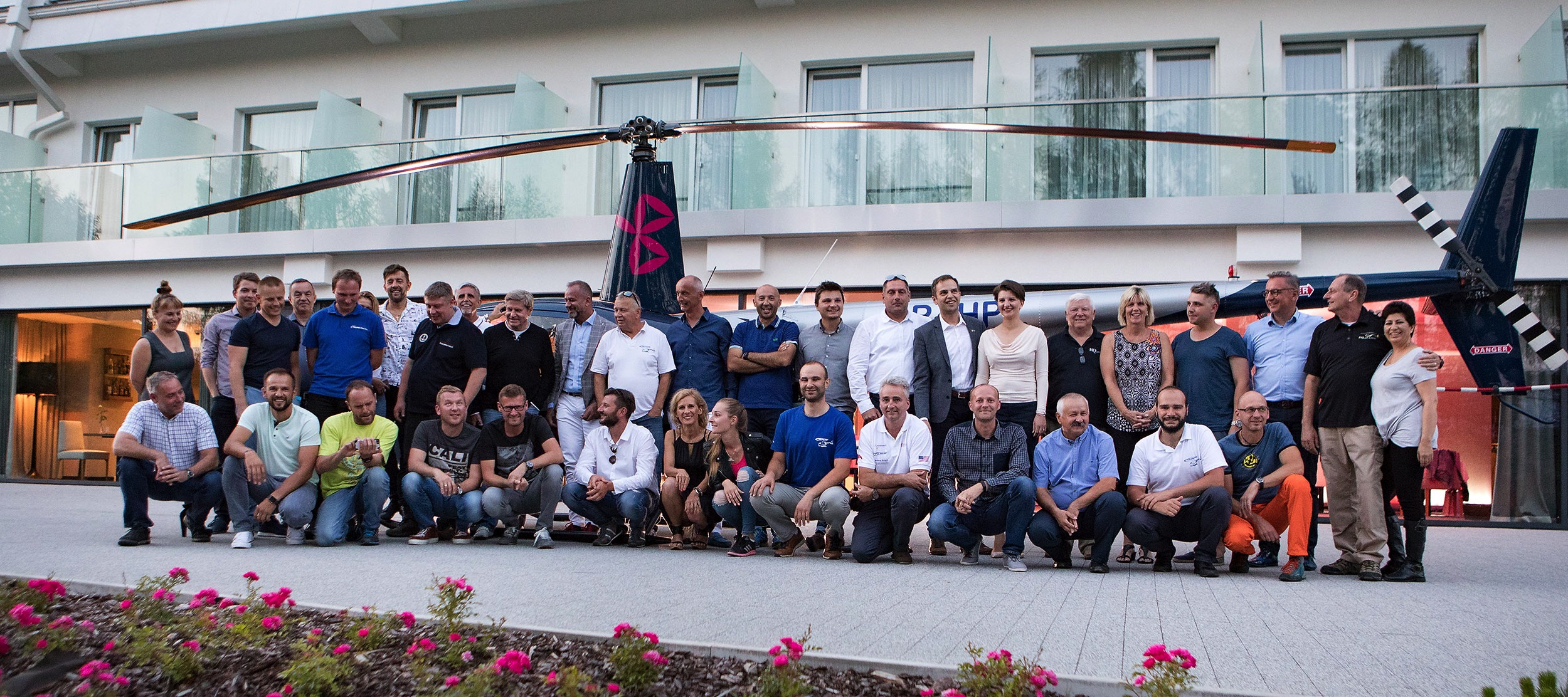“If You wonder about flight safety You should consider that your helicopter ride may be the safest part of your day.”

Robinson Helicopter Safety Course with RHC experimental pilots and Helipoland instructors and students in Bukowina Tatrzańska (edition 2017)
Helicopters used by Helipoland are subject to rigorous technical supervision controlled on a regular basis by the Civil Aviation Authority through regular audits. For the current control of the technical condition of the helicopter except the pilot responsibility is taken by Continuous Airworthiness Organization (CAMO), which defines the maintenance tasks for the Approved Maintenance Organization (Helicopter Service). All technical tasks related to the helicopter are performed by qualified, licensed and experienced technicians with the appropriate ratings working under supervision of PART 145 organisation.
Flying safety is our top priority, which is why learning to fly a helicopter is under detailed surveillance operation of Approved Training Organization (ATO), subject in turn to the current oversight by the Civil Aviation Authority. Each helicopter training is subject to the current registry of performed theoretical and practical classes. Learning to fly a helicopter is operated by experienced instructors with appropriate ratings.
Buying a new helicopter in Helipoland is a guarantee of quality provided by the experience of aircraft mechanics who ensure perfect maintenance of the helicopter. Sale of helicopters consists of appropriate configuration before purchasing, transportation to the site, installation of helicopter on site, preparation of documentation and airworthiness approval before release to the customer. It may also be training of flight crew and persons to additional ground support.
With a constant flow of information in the environment pilot – mechanic – operational and technical supervision – state supervision – manufacturer, all the details related to the fairly well-kept flying machine and piloting principles shall be documented safety regulations. Helipoland is primarily a modern, prestigious helicopters and airplanes, undergoing regular in-depth technical inspections, competent pilots with experience and good planning, which must be ready for all possible events. When planning a flight, we have foremost in mind how quickly, comfortably and efficiently transport the passengers to their destination, and no less, how to do it safely caring for the health and lives of passengers, crew and the safety of the aircraft and all the people involved in these operations. Flying with a Helipoland fleet you have confidence that each helicopter and airplane meets the most stringent safety standards, pilots have many years of experience, and that the flight is professionally trained and insured. We provide individual approach to your needs.
Over a lifetime, the chance of dying in an “air and space transport incident,” as the National Safety Council describes it, are 1 in 8,357. To put that in perspective, by their data from 2010, an individual is more likely to die from causes including heat exposure (1:8,321), choking (1:3,649), in an accident as a pedestrian (1:723), a fall (1:152) or unintentional poisoning (1:119).
The most important of all is… that aviation learns on its own mistakes in the fastest way. This is because all accidents as well as incidents are taken under scrutiny usually with cosequences stated in regulations.
The footage below shows the versatility and durability of helicopters and perfection of performance of these remarkable machines. It is also goo confirmation of the above statement.

Flight safety and flight training:
When someone considers learning to fly, the question of safety invariably comes up. How safe is flying in a light airplane? How safe is driving a car or boat? It depends on the circumstances, the risk tolerance of the individual and a willingness to keep learning.
Compared to automobiles, general aviation—defined as all kinds of flying except for the airlines and military—has about one-sixth as many accidents on a per-vehicle-mile basis, and the accident rate is stable. There are several reasons why. Training for a pilot certificate is much more rigorous than it is for a driver’s license. Mandatory ground and flight training, along with written and practical tests, help to ensure that pilots have achieved a basic level of proficiency. Periodic recurrent training helps to maintain and improve skills.

The environment in which aircraft operate is much more closely regulated, as well. The regulations have evolved over the years to address accident prevention, and most pilots prefer to use regulations as a minimum guideline to exceed in their own flight operations.
Perfect safety is unknown in transportation and probably in most of life’s endeavors. Our expectations have been based largely on the airline safety record. By almost any measure, commercial air travel is probably the safest mode of transportation. This is because of the tremendous emphasis that is placed on the reliability of aircraft, air crews, and the air traffic control system in which they operate.
General aviation uses many of the same procedures as the airlines to achieve a good safety record but the record will not match the airlines for the same reasons that pleasure boating is not as safe as traveling on an ocean liner. The aircraft are different, the pilots are different, and the objectives are different. But just as the diligent and cautious boater can operate safely while recognizing the limitations of his or her craft, so too can general aviation pilots. Pilots who develop and maintain their skills can fly with exceptional safety and derive maximum pleasure from this exciting activity.
